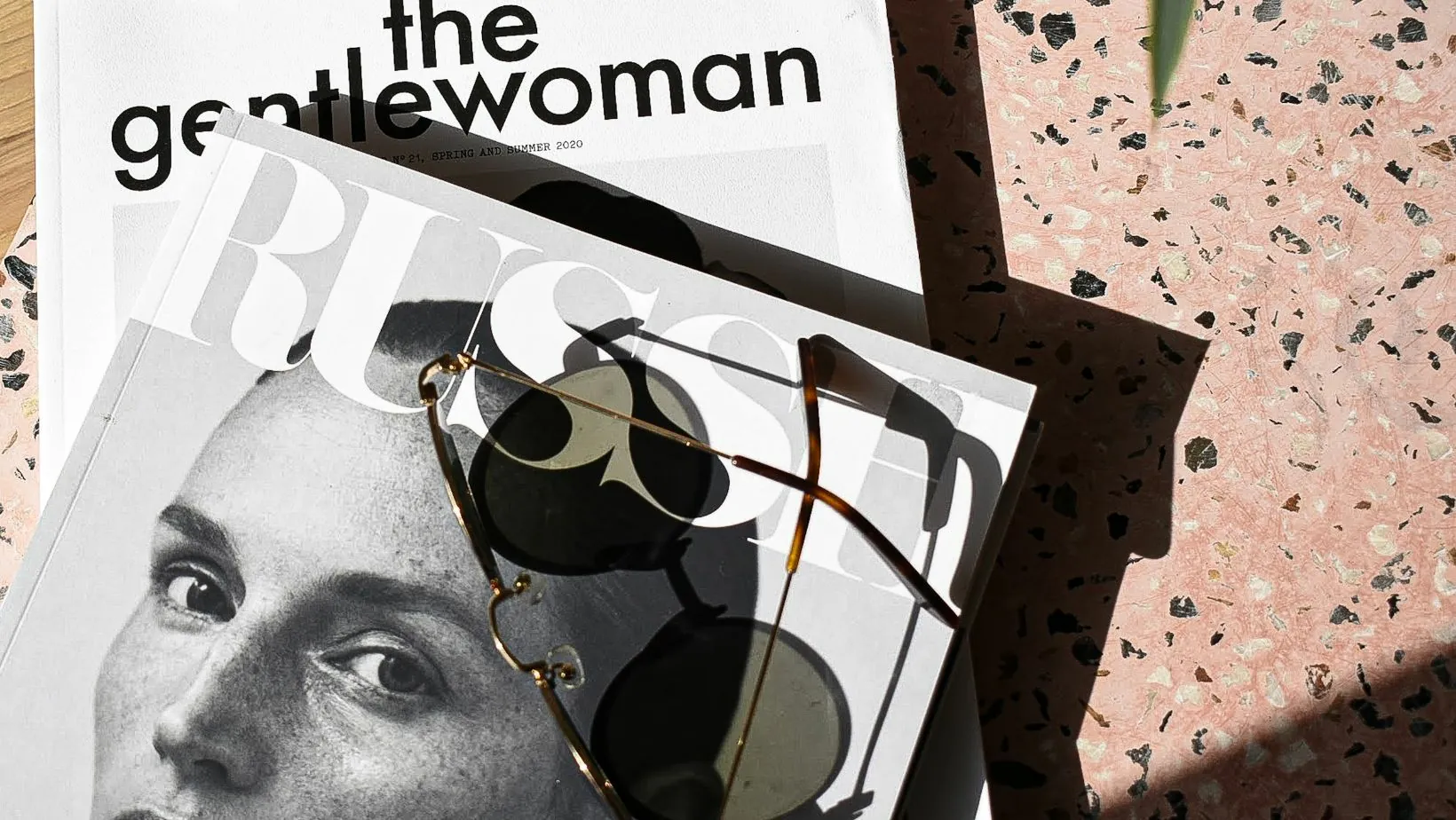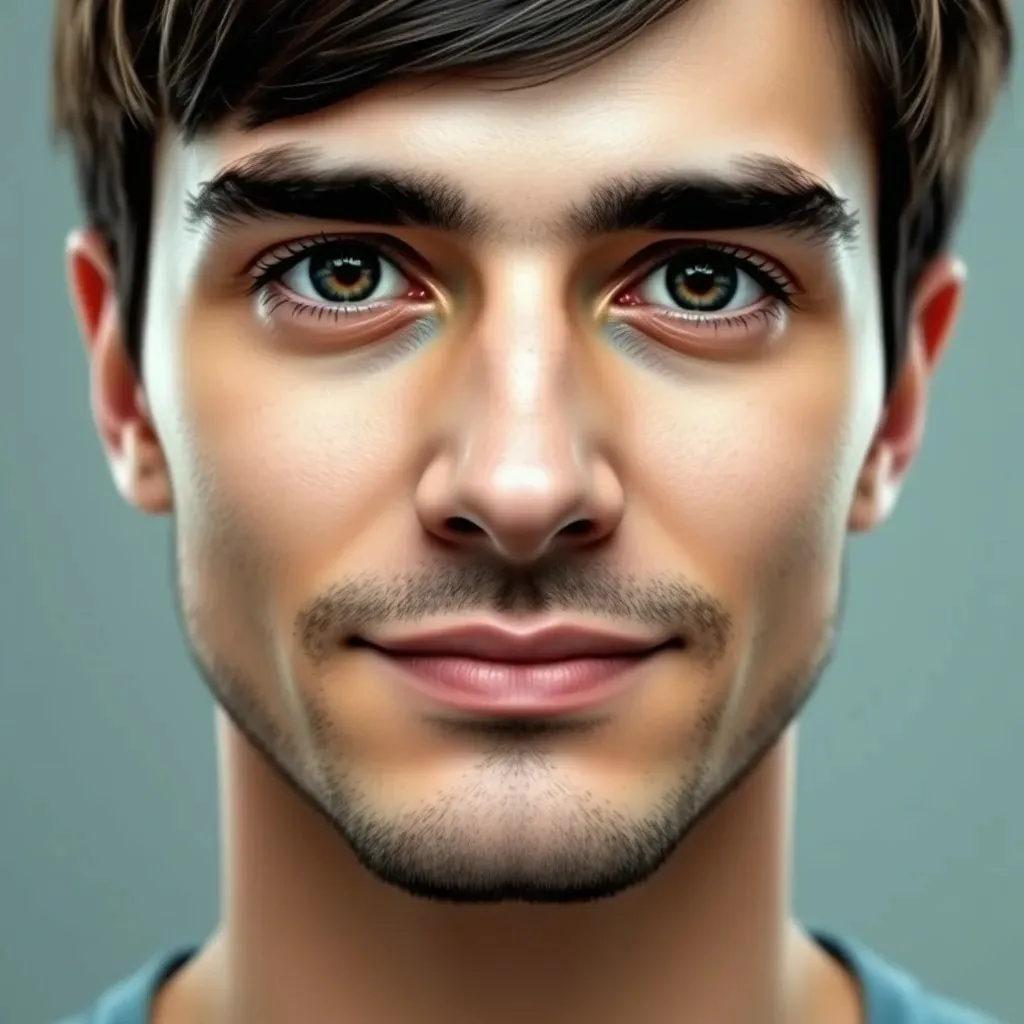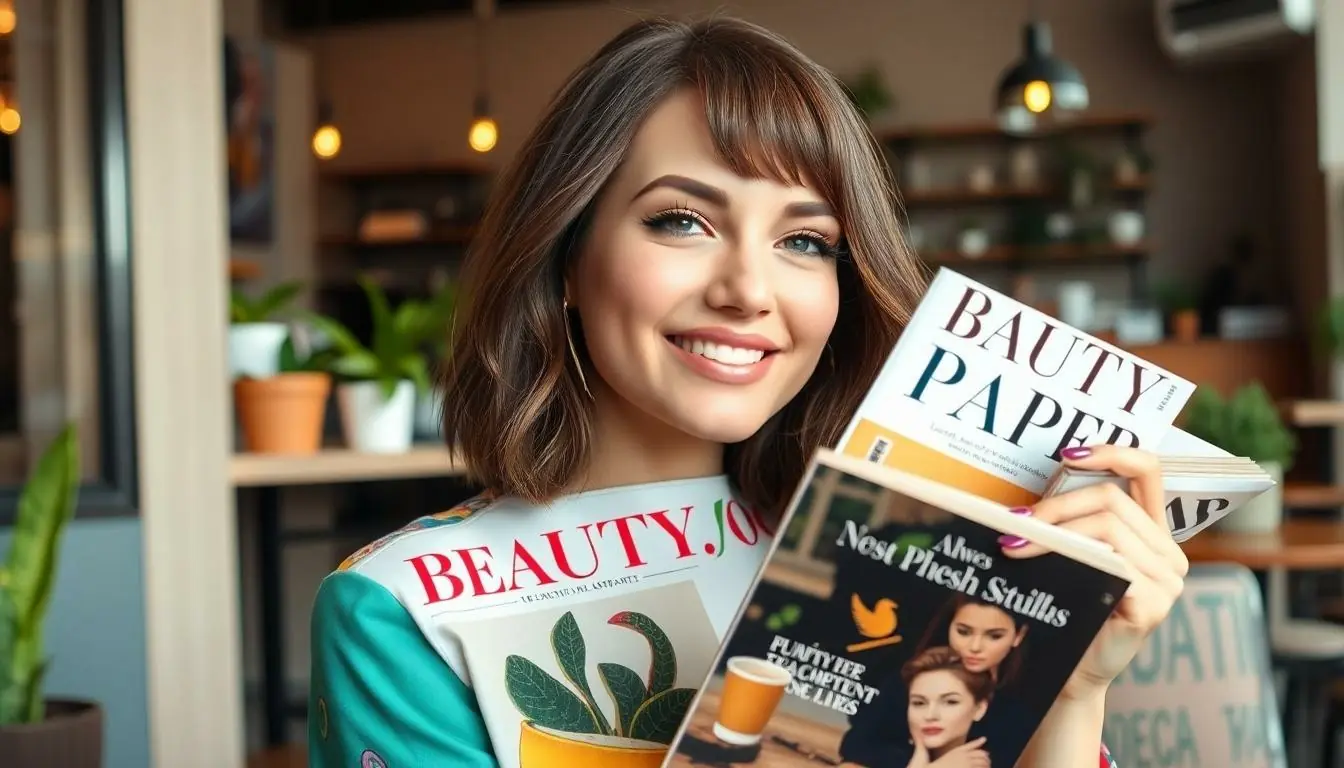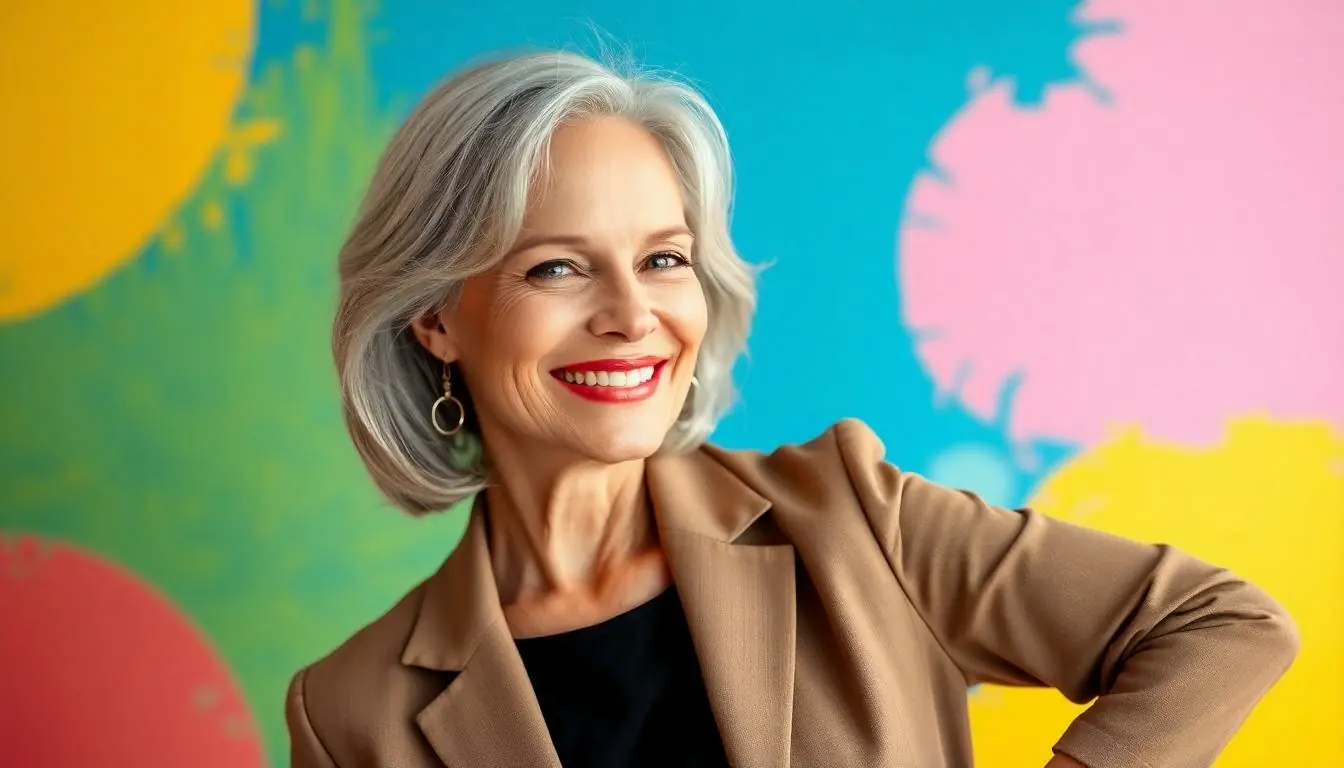Table of Contents
ToggleFlipping through the glossy pages of a beauty magazine feels like stepping into a world where every day is a good hair day and flawless skin is just a swipe away. Those covers, with their dazzling models and eye-catching headlines, promise secrets to achieving the perfect glow and the latest trends that’ll make anyone feel like a runway star. But let’s be honest—behind that dazzling facade lies a mix of creativity, marketing genius, and a sprinkle of Photoshop magic.
Beauty magazine covers are more than just pretty pictures; they’re a reflection of society’s ever-evolving standards of beauty. They capture the essence of what’s hot and what’s not, serving up inspiration with a side of humor. So, whether you’re a trendsetter or just someone who loves to admire from the sidelines, let’s dive into the captivating world of beauty magazine covers and discover what makes them so irresistible.
The Evolution Of Beauty Magazine Covers
Beauty magazine covers have transformed significantly over the decades. This evolution showcases shifting cultural norms and aesthetic values.
Historical Overview
Early beauty magazine covers often emphasized illustrated images and artistic renderings. These designs allowed for imaginative representations of beauty before photography became dominant. In the mid-20th century, photography introduced a new realism. Models and celebrities graced the covers, showcasing the latest trends and styles. The digital age further revolutionized the market through advanced editing techniques. These tools enable flawless representations, appealing to contemporary tastes and expectations.
Significance In Fashion Culture
Beauty magazine covers serve as cultural touchstones in fashion. They shape perceptions of beauty, pushing trends and defining standards. Covers often feature influential personalities who become icons. Such visibility plays a significant role in impacting consumer behavior and brand loyalty. Furthermore, these publications inspire readers, sparking creativity and encouraging personal expression. The covers contribute to an ongoing dialogue about identity and self-image in the fashion industry.
Iconic Beauty Magazine Covers Through The Years
Beauty magazine covers serve as snapshots of changing aesthetics and cultural values. They often capture the essence of glamour and attract readers by featuring recognizable faces.
Memorable Icons
Notable figures grace the covers of beauty magazines, leaving lasting impressions on their audience. Marilyn Monroe, for instance, became an emblem of beauty during the 1950s, frequently featured on various publications. Naomi Campbell revolutionized the modeling world in the 1990s, captivating readers with her stunning presence. More recently, covers with personalities like Rihanna and Selina Gomez reflect contemporary beauty standards. Each of these icons inspires trends and shapes how beauty is perceived across generations.
Cultural Impact
Beauty magazine covers influence societal perceptions of beauty, often setting standards for inclusivity and representation. The introduction of diverse models in the 2000s challenged traditional beauty norms, promoting acceptance of different skin tones and body types. Covers featuring plus-size models have significantly impacted the fashion industry, encouraging brands to embrace a wider range of beauty. Additionally, prominent issues like mental health and self-acceptance often surface on covers, sparking important conversations among readers. These publications not only reflect beauty trends but also help cultivate societal change.
Design Elements Of A Beauty Magazine Cover
Beauty magazine covers rely heavily on creative design elements to capture attention. Color schemes and typography play crucial roles in this visual appeal.
Color Schemes And Typography
Color schemes evoke emotions and set the magazine’s tone. Bright colors often convey energy, while softer hues suggest sophistication. Typography enhances readability and brand identity. Bold fonts demand attention, while elegant scripts add a touch of femininity. Common pairings create visual harmony that appeals to the target audience. The strategic use of color and font combinations reinforces the intended message.
Imagery And Layout
Imagery forms the centerpiece of beauty magazine covers. High-quality photographs showcase models and beauty products, offering aspirational visuals. Layout involves the precise arrangement of images, text, and logos. Balanced layouts facilitate easy navigation and direct viewer focus. Eye-catching graphics, combined with strategic spacing, contribute to overall aesthetic appeal. Effective design captivates readers and encourages them to explore inside the magazine.
The Role Of Photography In Beauty Magazine Covers
Photography plays a crucial role in the allure of beauty magazine covers. High-quality images attract attention, showcasing beauty in its many forms.
Influential Photographers
Legendary photographers shape the aesthetic landscape of beauty magazine covers. Photographers like Richard Avedon and Mario Testino made significant contributions to the genre. Avedon’s iconic black-and-white portraits capture emotion, while Testino’s vibrant, glamorous shots convey modern elegance. These professionals not only capture images but also tell stories through their lens, making the subjects relatable. Emerging talents also challenge conventions, emphasizing diversity and authenticity. This evolution in photography highlights its power to redefine beauty standards and inspire new generations.
Techniques And Trends
Innovative techniques influence photography’s role in beauty magazines. Lighting plays a significant part by highlighting features and enhancing mood. Soft, diffused light creates a dreamlike effect, while sharp lighting emphasizes detail. Retouching techniques refine images, making skin appear flawless while maintaining a natural look. Moreover, the use of digital editing software allows for creativity that enhances visual storytelling. Current trends embrace diversity, showcasing models of all shapes and ethnicities. Such trends reflect the societal shift towards inclusivity, presenting a broader definition of beauty in contemporary culture.
The Future Of Beauty Magazine Covers
Beauty magazine covers are evolving rapidly, driven by technological advancements and changing societal values. The digital landscape reshapes how covers are designed and consumed.
Digital Transformations
Technology profoundly influences beauty magazine covers. Digital tools enhance editing processes, creating vivid and striking images that captivate audiences. These platforms allow for real-time updates, enabling instant engagement with trends. As augmented reality and interactive elements gain traction, readers increasingly experience dynamic content. Influencer collaborations also boost reach, fostering a sense of community around beauty topics. Brands now leverage data analytics to identify preferences, tailoring content for specific demographics while embracing platform diversity.
Sustainability And Inclusivity
Sustainability emerges as a key focus in beauty magazine covers. Eco-friendly materials and practices become priorities in production, reflecting consumer demand for responsible choices. Additionally, inclusivity shapes imagery, showcasing a broader spectrum of beauty. Featuring models of various ethnicities, ages, and body types resonates with diverse audiences. Advocacy for mental health and self-acceptance strengthens connections with readers, addressing contemporary challenges. Brands also align with social movements, further promoting messages of empowerment. Embracing these values ensures beauty magazines remain relevant in today’s evolving cultural landscape.
Beauty magazine covers continue to captivate audiences by blending creativity with cultural commentary. They not only reflect societal standards but also challenge and redefine them, promoting inclusivity and diversity. As the industry evolves, these covers adapt to technological advancements and shifting values, ensuring they remain relevant and impactful.
The future promises exciting innovations in design and content, with a focus on sustainability and mental health. Beauty magazines are poised to inspire and engage readers while fostering conversations about identity and self-acceptance. Ultimately, these covers serve as powerful visual narratives that shape perceptions of beauty for generations to come.







